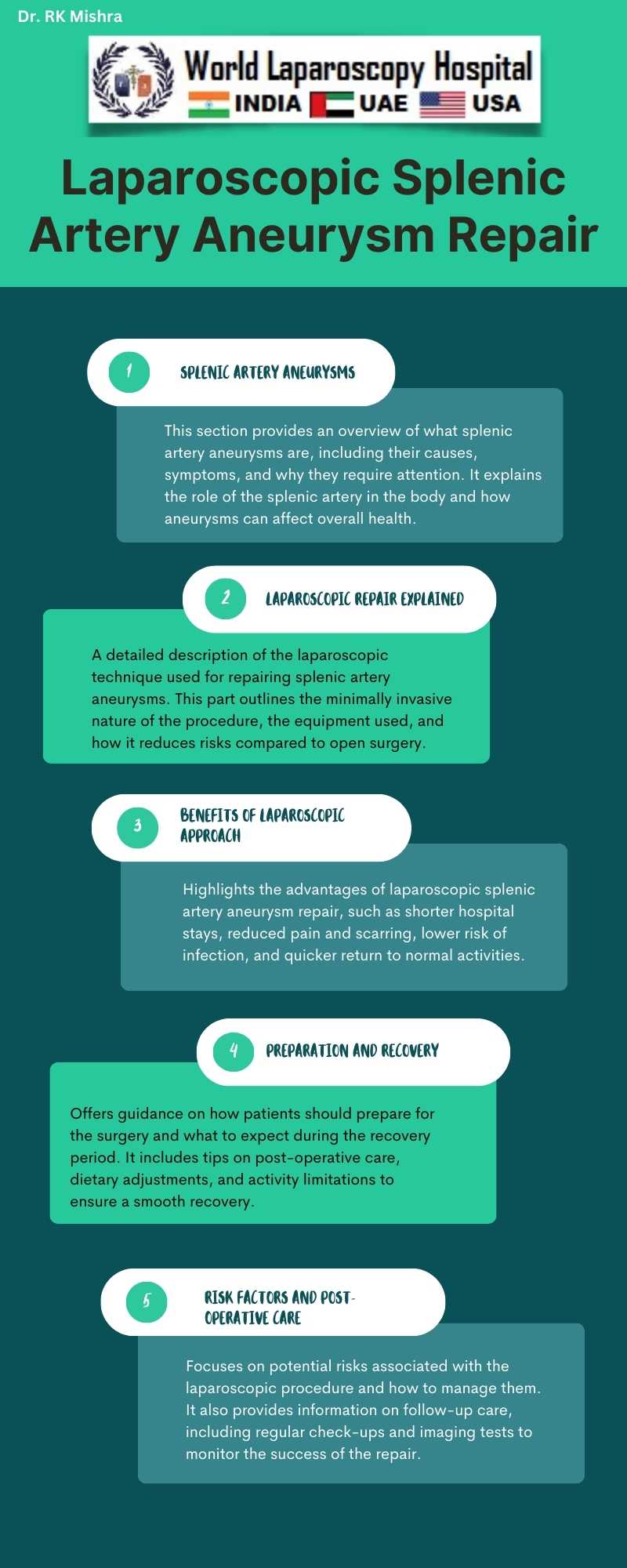Innovative Approaches in Laparoscopic Splenic Artery Aneurysm Repair
The realm of surgical interventions has witnessed a remarkable evolution, particularly in the approach to splenic artery aneurysms (SAA), a rare but potentially life-threatening condition. The innovation in laparoscopic techniques has opened new vistas for safer, more efficient, and less invasive treatment options. This article delves into the cutting-edge methodologies in laparoscopic repair of splenic artery aneurysms, underscoring the advancements that have significantly altered the surgical landscape.

The Shift to Minimally Invasive Procedures
Traditionally, splenic artery aneurysms were addressed through open surgery, which, while effective, posed significant risks and a longer recovery period. The advent of laparoscopic surgery marked a pivotal shift, offering a minimally invasive alternative. This approach involves small incisions and the use of a laparoscope, a thin tube equipped with a camera and light, allowing surgeons to have a detailed view of the internal organs on a monitor.
Technological Integration and Precision
A remarkable aspect of the innovative laparoscopic approach is the integration of advanced technologies. Robotics, 3D imaging, and intraoperative ultrasound have greatly enhanced precision and control, enabling surgeons to perform complex procedures with higher accuracy and reduced risk of complications.
Customized Clipping and Coiling Techniques
Innovations in laparoscopic SAA repair include customized clipping and coiling techniques. Surgeons can now use laparoscopic clips or endovascular coils to isolate and treat the aneurysm effectively. These methods not only minimize the risk of bleeding but also preserve the spleen's functionality, a significant advantage over traditional splenectomy.
Endovascular Stent Grafting: A Game Changer
The introduction of endovascular stent grafting within the laparoscopic framework has been a game changer. This technique involves inserting a stent graft via a catheter to reinforce the weakened artery wall. This method is particularly beneficial for patients with comorbid conditions, as it significantly reduces operative time and recovery duration.
Patient-Specific Simulation and Planning
With the aid of advanced imaging and simulation technologies, surgeons can now plan the surgery with a patient-specific approach. This preoperative planning ensures a higher success rate and allows for the anticipation and management of potential challenges during the procedure.
Training and Skill Enhancement
The shift towards these innovative techniques necessitates specialized training and skill enhancement for surgeons. Simulation-based training and workshops have become integral to mastering these complex procedures, ensuring that surgeons are well-equipped to handle the nuances of laparoscopic SAA repair.
Conclusion
The innovative approaches in laparoscopic splenic artery aneurysm repair mark a significant leap in surgical treatment. These techniques not only offer a safer and less invasive option for patients but also ensure quicker recovery and better outcomes. As the field continues to evolve, it is imperative for surgeons to stay abreast of these advancements, integrating them into their practice to provide the best possible care. The future of SAA repair looks promising, with continuous innovations paving the way for even more effective and patient-friendly treatment modalities.

The Shift to Minimally Invasive Procedures
Traditionally, splenic artery aneurysms were addressed through open surgery, which, while effective, posed significant risks and a longer recovery period. The advent of laparoscopic surgery marked a pivotal shift, offering a minimally invasive alternative. This approach involves small incisions and the use of a laparoscope, a thin tube equipped with a camera and light, allowing surgeons to have a detailed view of the internal organs on a monitor.
Technological Integration and Precision
A remarkable aspect of the innovative laparoscopic approach is the integration of advanced technologies. Robotics, 3D imaging, and intraoperative ultrasound have greatly enhanced precision and control, enabling surgeons to perform complex procedures with higher accuracy and reduced risk of complications.
Customized Clipping and Coiling Techniques
Innovations in laparoscopic SAA repair include customized clipping and coiling techniques. Surgeons can now use laparoscopic clips or endovascular coils to isolate and treat the aneurysm effectively. These methods not only minimize the risk of bleeding but also preserve the spleen's functionality, a significant advantage over traditional splenectomy.
Endovascular Stent Grafting: A Game Changer
The introduction of endovascular stent grafting within the laparoscopic framework has been a game changer. This technique involves inserting a stent graft via a catheter to reinforce the weakened artery wall. This method is particularly beneficial for patients with comorbid conditions, as it significantly reduces operative time and recovery duration.
Patient-Specific Simulation and Planning
With the aid of advanced imaging and simulation technologies, surgeons can now plan the surgery with a patient-specific approach. This preoperative planning ensures a higher success rate and allows for the anticipation and management of potential challenges during the procedure.
Training and Skill Enhancement
The shift towards these innovative techniques necessitates specialized training and skill enhancement for surgeons. Simulation-based training and workshops have become integral to mastering these complex procedures, ensuring that surgeons are well-equipped to handle the nuances of laparoscopic SAA repair.
Conclusion
The innovative approaches in laparoscopic splenic artery aneurysm repair mark a significant leap in surgical treatment. These techniques not only offer a safer and less invasive option for patients but also ensure quicker recovery and better outcomes. As the field continues to evolve, it is imperative for surgeons to stay abreast of these advancements, integrating them into their practice to provide the best possible care. The future of SAA repair looks promising, with continuous innovations paving the way for even more effective and patient-friendly treatment modalities.
No comments posted...
| Older Post | Home | Newer Post |

